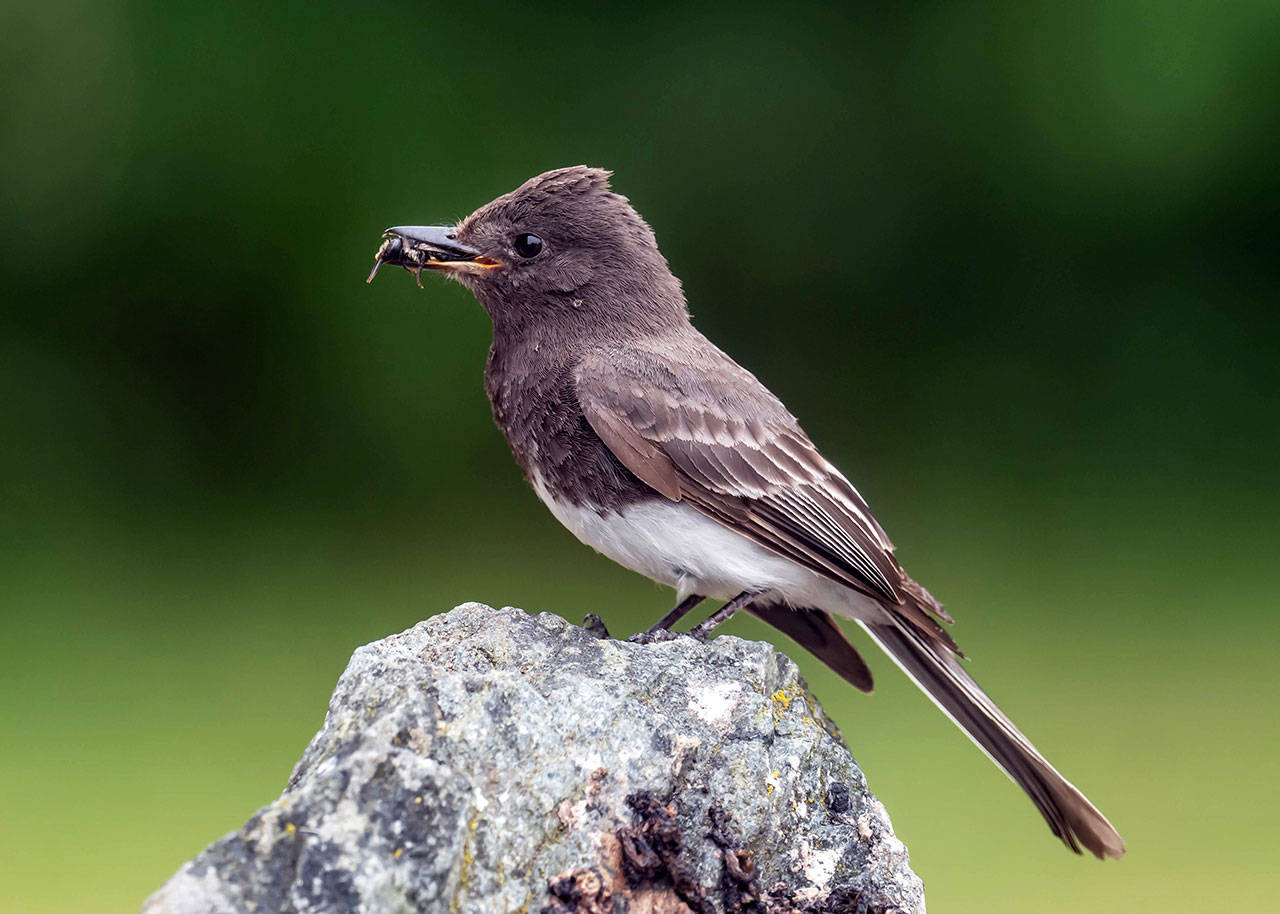By Dianna Moore
Grays Harbor Audubon Society
This is a bird I am very familiar with as it is common to the L.A. area where I last lived. My backyard was a real draw for this bird as I had a dog whose piles of poop were a favorite stop for the Black Phoebe. I could count on frequent visits from this fly-catching beauty, and the sounds of its call was indeed music to my ears.
General Description: The Black Phoebe is no longer a rarity in the Pacific Northwest, but it is not that common either. It is gradually moving north into our area from the south, principally from California. A small fly-catcher has a big head and plump body with a long, squared-off tail which it pumps most of the time while perched. Coloring is a black or dark head and breast with a white belly. The bill is straight and thin and there is usually a peak on the back of the head. Both sexes are about 6.3 inches long and weigh about 0.5 to 0.8 ounces.
Habitat: These birds are almost always found near water, so it is no surprise to find at least one at Perkins Pond in Ocean Shores. The fresh-water pond is surrounded by mostly native bushes (salal, myrtle, shore pine) and is a favorite spot for those birds looking for shelter in a storm.
They seem to be fairly comfortable around human settlements.
Behavior: The Black Phoebe spends most of its time snatching its prey out of the air from its perch on the lower branches of a bush, again…near water.
Diet: Flying insects and arthropods mostly, with the occasional minnow and the rare small berry.
Nesting: Monogamous, with pairs staying together up to five years. The male hovers in front of several nest possibilities for five to 10 seconds each, but the female picks the location and builds or restores the nest herself.
The nest itself is often built against a wall with an overhanging roof, such as building eaves, irrigation culverts and abandoned wells. Made of a mud outer shell with an inner lining of plant fibers, it is often reused as a nest site year after year, sometimes even the same nest. She lays one to six eggs and incubates them for 15 to 18 days. Both parents feed the young, but not much is known of their habits. Some birds will produce a second brood.
Migration: Most Black Phoebes stay pretty much within their own territories year-round, but there are some who migrate from the northern-most places to farther south, but not much farther.
Conservation Status: Black Phoebes are doing well, with increasing numbers thanks to their ability to use man-made structures to help in nesting sites. Their close association with water means they are susceptible to human-caused water pollution and destruction of habitat.
When and Where to Find on the Harbor: I wish I could give more specific information on viewing these birds, but the only time I have seen one in our area is in the winter when the single individual returns to Perkins Pond in Ocean Shores for the winter. We have been able to count it on the Grays Harbor Christmas Bird Count for several years, so I think this is one bird out of its territory.
One other possibility is at the Hoquiam Sewage Lagoon. Though not as frequent, one has been seen there.



